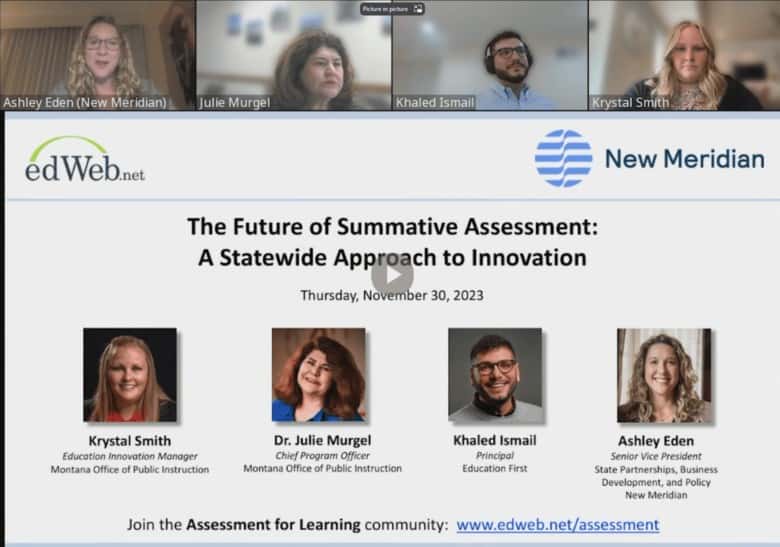Editor’s Note: This is the second installment of The Prime’s Decoding the Data series, which examines organizations that package and present assessment data in new and creative ways. See the entire series on New Meridian’s website.
Several years ago, public education officials in Washington, D.C., became convinced that a new strategy was needed to increase the rate of on-time, four-year graduation. A host of engaged education agencies, school leaders, and civic partners were bought in, and with that buy-in came a litany of theories about what steps could be taken to improve outcomes, but much of it was formed through anecdotal evidence, observation, and personal and professional experiences.
What was missing was a concrete diagnosis grounded in hard data.
Officials in the 50,000-student district knew that many students were facing unique challenges. And at the time, it was managing a slew of programs designed to address those needs through special coursework augmenting standard curriculum, and in some cases, revamped curriculum designed to meet the unique needs of children experiencing divorce, extreme poverty, single-family homes, homelessness, high mobility rates, and ESL, among many dozens of other difficult circumstances.
Yet despite roughly 60 tailored interventions, 40% of 9th graders in the District weren’t expected to graduate on time. Worse, nobody could say with absolute certainty when students were falling off-track, why they were falling behind, and most importantly, what programs and schools had the highest likelihood of getting struggling students back on the path toward on-time graduation.
To answer those questions, the district turned to Tembo, a firm specializing in the contextualization of complex education data.
Tembo is part of a new breed of organizations that translate vast amounts of complex data into information that can be easily understood by parents, teachers, educators and policy makers. Their efforts are providing actionable information that can be used to guide improvements throughout the education system.
Mapping Inputs and Outcomes
“The way in which data is presented to parents is most important,” says David Stewart, Tembo’s founder and CEO. “But to make that data truly meaningful and actionable, it has to be on top of a really robust analytic engine.”
Stewart’s team began an intensive, months-long data collection effort that absorbed hundreds of disparate inputs including race, ethnicity, gender, lunch status, ESL, and inclusion in the foster system. Longitudinal student information such as special education status, test scores, and attendance records, among dozens of others were also collected. Employing sophisticated analytic methods, Stewart’s team was able to map the relationship between all of the various inputs and graduation rates.
By the time the analysis was completed, officials in the District had gained a nuanced and granular understanding of the impact specific student challenges have on a desired outcome. The analysis allowed them to segment a student population consisting of tens of thousands of children, and then say, with a high degree of certainty, the degree to which student mobility or special education classification decreased the likelihood of on-time graduation. It provided a concrete relationship between any number of possible inputs – for example, whether a student had been suspended for disciplinary reasons – and graduation rates.
In effect, Tembo’s groundbreaking analysis produced a district-wide early warning system, providing D.C. education officials with a roadmap for how to more efficiently and effectively steer scarce resources to areas most likely to affect outcomes.
Answering Important Questions
Stewart’s work in analytics began in the early 2000s, while he was serving as Executive Director of Evaluation and Performance Reporting for the New York Public School system. It was there that he began building detailed Excel spreadsheets to draw correlations between achievement on test scores and desired outcomes. His analyses gave the department valuable insight into how even marginal improvements in test scores can impact broader student success. That predictive insight informed the way the department made decisions on where to focus resources.
It wasn’t long before word of Stewart’s work in New York began to spread, and other school districts began seeking him out to help improve their own data analytics operations.
“I helped educators answer important questions through the data,” Stewart said. “I helped them create interactive tools with Excel to help them better understand it. Eventually I realized that if I could make my Excel-based services available on the Web, we could have a much bigger impact.”
Tembo, which works in a number of states that use New Meridian testing content, began as an outgrowth of the work Stewart was already doing in school districts, largely to meet growing demand. But as the company grew, it became focused on improving the way data is communicated to different audiences, including schools, administrators, parents and policymakers.
In nearly 10 years, the company has helped education officials in some of the country’s largest school districts, including New York, Philadelphia, and Baltimore.
Officials in the Washington, D.C. school district say the analytics system created by Tembo has helped better understand how to target scarce education resources. It has helped them determine which interventions provide the most “bang for the buck.” And it has given them a clear picture of which schools are improving the odds for students and which are decreasing the odds.
“The analytics allow us to look at a particular school and say, ‘based on the makeup of the kids in this school, the graduation rate should be X, but it was actually Y’,” Stewart said. “The ability to analyze data in this way obviously has huge implications for accountability systems.”
Next Month: How one company is helping to redefine the parent-teacher conference into something far more useful.


